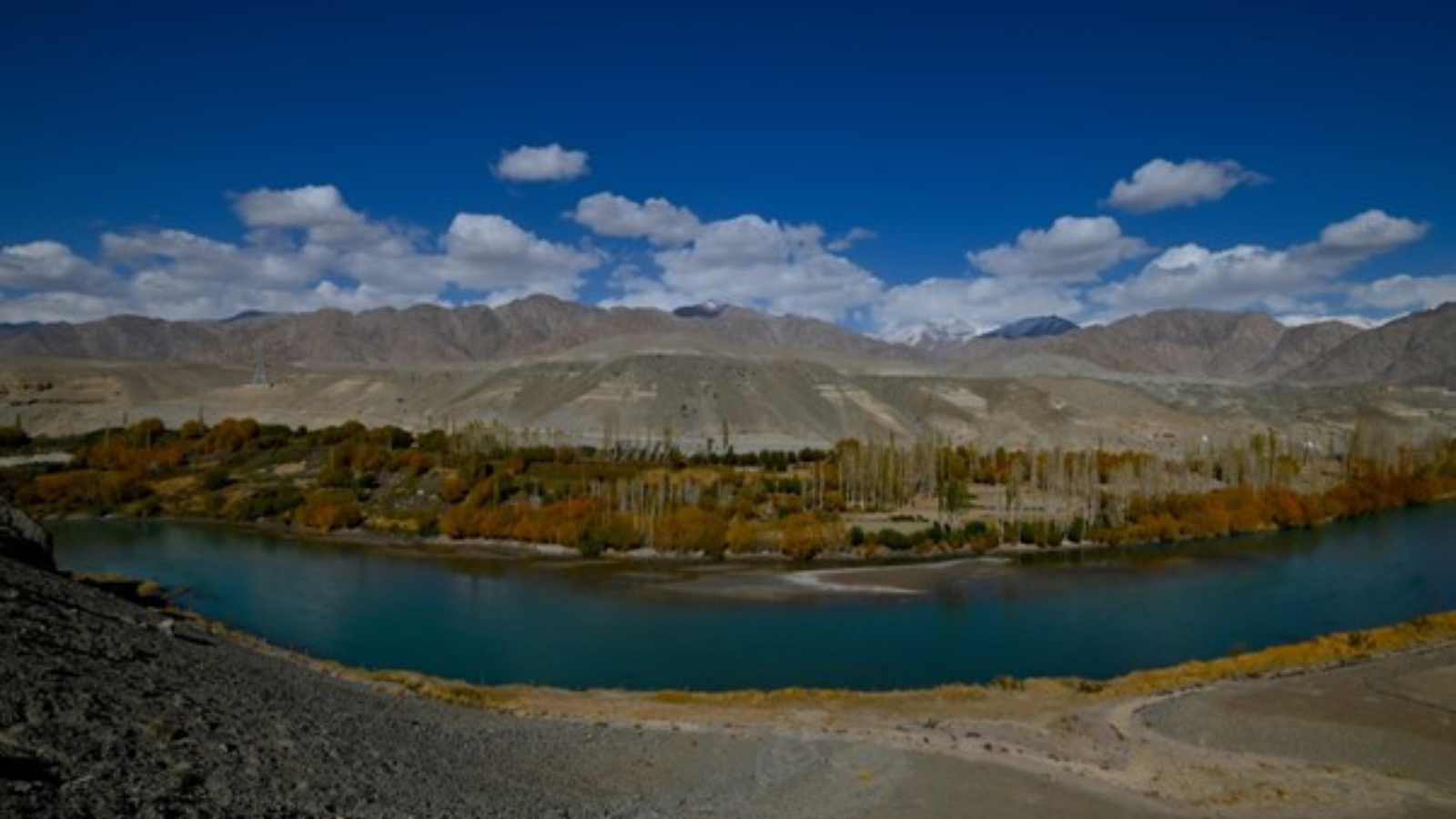Indus from Rumbak. Photo by Ashish Kothari.
Legends of Sher Dariya (The Lion River)
By:
Shrishtee Bajpai, a writer, researcher, and activist with Kalpavriksh Environment Action Group Pune
Padma Angmo, a wildlife enthusiast and project manager at the Snow Leopard Conservancy India
Stanzin Angdu, a filmmaker from Leh, who makes documentary films and is passionate about nature
Photos by Shrishtee Bajpai, Ashish Kothari, and Padma Angmo
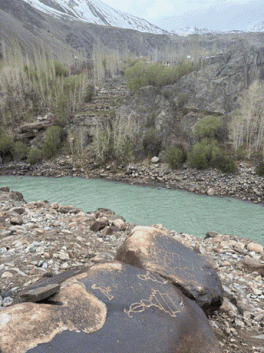
One May afternoon, the sharp sun pierced through the clouds indicating the arrival of relatively hot summers, while we sat next to the cerulean Indus River flowing through a deep curve, wondering how rivers speak to us. As magpies cackled, chiff chaffs called out plaintively, and at a distance ruddy shell ducks fed on the grasses, and the sun slowly mellowed painting the sky with red hue, we looked at the river with hope. “Bring water from the Indus River, it will cure our pain” is an old belief of people in Ladakh located in the western edge of the Himalayas, who have lived along the river for centuries. We wondered, the river that cures our pain, who will cure his pain? Is the river that is now heavily polluted by human abuse, can it still cure our pain?
The Indus basin covers 430,000 square miles (sq mi) traversing four countries: Afghanistan, China, India, and Pakistan, with most of the area lying predominantly in the latter two countries, and eventually flowing into the Arabian sea. Through many legends Indus is considered powerful. Medicinal. Furious. A being in itself. The ancient river flows like time through many landscapes constructing new stories and re-telling stories of lost empires.
Petroglyphs and inscriptions found on racks along the upper Indus reflect remarkably diverse visual symbolism, languages, and writing systems, which testify to cross-cultural exchanges, religious transmission, and intertwined networks for migration and trade in the high mountain environment.
The Origin Story
The River Singee tsangspo (as Indus is known in Tibet and Ladakh ) originates from Kang Rinpochey - ‘Kang’ meaning ice and ‘Rinpochey’ meaning sacred. Close to its origin is Lake Mansarovar (known as Tsomo Mapham in Ladakh), which is considered "greatest, holiest of all in every aspect." The river circles the sacred lake Tsomo Mapham, where it originates by the confluence of river Sengge Zangbo and Gar Tsangpo and enters Ladakh from Demchok and flows towards Leh. The total length of the river is around 3,180 kilometers (km), and about 750 km of it flows through Ladakh. Indus has been an important source of sustenance for centuries. Apart from being the nurturer of one of the earliest human civilizations- the Indus Valley Civilization (also known as the Harappan Civilization); the river has shaped the culture, history, and traditions of the regions it flows through. In Ladakh, the river continues to sustain agricultural lands along its banks. The traditional irrigation system in Ladakh involves drawing water through canals to cultivate fields and support agricultural activities in the otherwise arid and mountainous landscape.
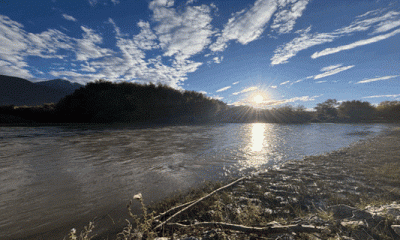
Ladakh is a cold desert and one of the highest plateaus (3000 meters above mean sea level and higher) of India, with part of its north-western and north-eastern territory bordering Tibet and Pakistan. (Kothari, et.al., 2019). This region receives much less rain and its unique topography includes snow-capped and rocky mountains, high-altitude lakes, alpine steppe/meadows, grasslands, sand dunes, hot springs and mighty rivers like the Indus and Zanskar, fed mostly by winter snowfall and glacial melt. This diverse landscape is also home to a diversity of mammals, such as the Asiatic ibex, blue sheep, Tibetan gazelle, Tibetan wild ass, Tibetan wolf, red fox, snow leopard, Pallas’s cat and over 318 species of birds including the highly threatened Black-necked Crane. (Padmanabhan, S and Kundaji, Y., 2014).
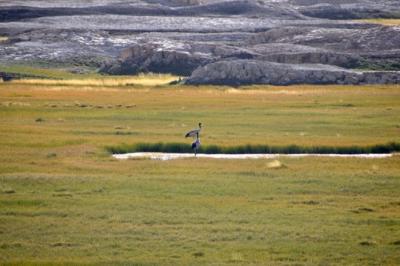
Indus is often referred to as Dariya in Ladakh. A word that comes from classical Persianدریا (daryā), cognate with Sanskritज्रयस् (jrayas, “expanse”), related with Northern Kurdishzrê, zerya (“sea”) all meaning sea. We asked several people why Indus is a dariya and not nadi (a river). “A river so vast, endless, long, blue and whose expanse is like the sea, can’t be merely a nadi (river)” - said Tsewang Stobdan, the village headman of Alchi Village, situated on the south bank of Indus river, about 60 km from Leh town. The length and the river's magnificence is often highlighted in the oral history of Ladakh.
Water practices, songs and stories
Morup Namgyal, a folk musician, composer and dramatist, known for his contributions for the revival of Ladakhi and Tibetan folk music tradition, told us how Indus finds mention in several songs and stories of the region. For instance, during the reign of King Chogyal Nima Namgyal(from 1694-1723 CE), a song was written:
Ringta ya eshey Singee Ltsangspo Gunnang Ring
Hey la de ley wa sang, Ltsa-wei lama-woe skutse Gunnang Ring
Hey la de ley wa sang, Jamyang Padkar-e skutse Gunnang Ring
Meaning: The Indus River is long and flowing — may the lives of Lts a-woe Lama(guru) and Jamyang Padkar be even longer. Ladakhis often referred to the river as the one with strength, bravery, and longevity and as the great Indus. In the epic of Ling Gyalam Kesar, an epic from Tibet and Central Asia which is passed on orally across generations; a prayer narrated by Rgyalu Rgyalsa, one of the characters in the story says:
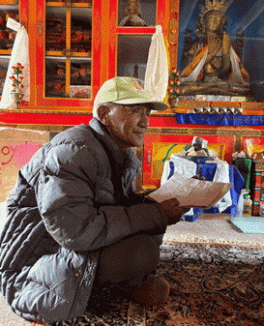
Das Kar-e la Pang Dzodpo, Khachul Zjung la Khil-shik
Chospa Mangpoe Pang Dzodpo, Podyul Zjung la Khil-shik
Spawo Mangpoe Pang Dzod, Ladakh Zjung la Khil-shik
Spawo Mangpoe Pang Dzod, Ladakh Zjung la Skeyshik
Meaning: May all brave warriors be born in Ladakh. Hence, it is believed that Ladakhis are descendants of heroes because they drink the water of Singee Khababs i.e the Indus.
Namgyal further narrates the story of Gyalwa Tsongkhapa, a great Buddhist master, who once sent a tiny statue made from his own nosebleed to Ladakh. This thumb-sized statue was of Tsepakmed (the Buddha of Long Life). Without having seen Ladakh, Tsongkhapa prayed, "May the Galdanpa (Gelukpa) sect flourish on the right bank of the Indus River." As if fulfilling his wish, the Stakna Monastery was built by Stod Changsem Shesrab on the right bank of the Indus, and soon other Gelukpa monasteries followed in Thiksey, Spituk, and Likir villages.
“The spirit of the river is about it being medicinal. It is a life force for us. It is precious. We used to drink its water but not anymore” says Tsering Angchuk of Thiksey village, about 19 kms from Leh town, well known for its century-old monastery affiliated with the Gelug school of Tibetan Buddhism.
Villages along the banks of Indus have been dependent on the river for agriculture, however, over the last few years with receding glaciers and springs drying up, the water in Indus has significantly reduced. “Whenever we divert Indus water for our agriculture fields, we perform ceremonies” said Tsering Angchuk, informing us to attend one such ceremony being held in the neighboring Shey village.
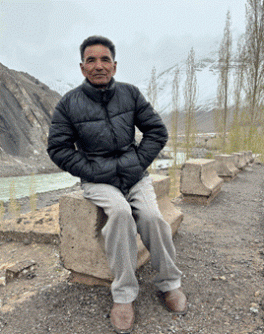
It was around late April, with mild winters and mountains glistening with sun indicating arrival of harsh summers. When we reached Shey village, preparations for the river ceremony were in full swing. We were offered some tea while the villagers remained busy making arrangements for offerings to the deity. On the banks of the river, on a common land, a spot was designated for performing the ceremony. “Before we direct the water to irrigation fields, we first offer Indus water to Dorjey Chenmo, our protector deity. We will continue playing drums whose tune is inspired by the beating of wings of a sky lark bird” said one of the elders at Shey. For the villagers this prayer ceremony is very important as it seeks protection for their fields, harvest and abundance of water. Before this ceremony is performed, also called Tsir of Yur-goa chu rgang-ches (the practice of diverting the water from the Indus), the Onpo (local astrologer) looks for an auspicious day to perform the prayer ceremony and rituals. Meanwhile, villagers fertilize their fields by distributing manure, carried by the donkeys in their fields, this practice is called bung-lud. Simultaneously, they perform the practice of Skar-zin or Har-zin near the stupa called Chorten Nemo, located between Shey and Thiksey village. This is a beautiful practice, which literally translates to star-catching- finding an auspicious constellation for a date to initiate a prayer ceremony and cleaning of channels. Once the ceremony is performed, the entire village community cleans the Mayur and/or water channels through which water is diverted to agricultural fields from the Indus river. The practice is called Yura-tonches, which in earlier times was an important practice of collective work but is slowly dwindling away. Back in the days, they used to measure the length of the Mayur to be cleaned by the foot steps (approx. 8 foot step length) for each family. And it used to take them around 7 to 8 days to clean the entire Mayur. “It used to be fun, sort of picnic time for the people of Shey during this work but now people are too busy and don't have the time for slow rituals,” said Tsering Angchok of Shey Lakruk village.
“It used to be fun, sort of picnic time for the people of Shey during this work but now people are too busy and don't have the time for slow rituals,” said Tsering Angchok of Shey Lakruk village.
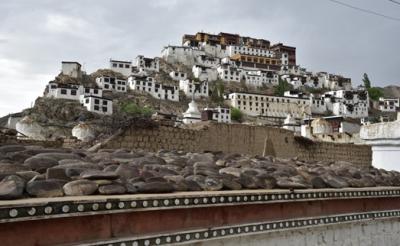
Several of the villages on the banks of Indus such as Shey, Thiksey, Chushot, Spituk, Phey, are dependent on Indus for their agriculture. The distribution of water to the households is monitored by a churpon (chhu=water; spon=leader) who is appointed in a community meeting. He is expected to have knowledge of the water flow, priorities, field conditions, crop requirements and order of distribution to the households, and can decide on the ponds that need to be preserved during the time of water scarcity.
While the rhythmic drumming continued, one of the village priests performed a ritual involving a rhythmic circling around the deity’s shrine and offering butter, barley, chang (local beer made of barley), among other things. “We have three churpons in our village who are responsible for distributing the water to all households once it is directed from here,” added Tsering Smanla from Shey while we watched the ceremony.
The river Indus is joined by several rivers which gives it analogy of dariya, the Shyok River (sometimes spelled Shayok) is a major tributary of the Indus River that flows through northern Ladakh in India and into Gilgit-Baltistan in Pakistan. Originating from the Central Rimo Glacier in the eastern Karakoram, it runs for about 550 km (340 mi) before joining the Indus near Skardu. In Ladakhi belief, the Indus River is considered male and the Shayok River female. The two rivers meet at a place called Chumdesa near Skardu, which has sand on the banks of the river. Interestingly, despite their confluence, the river does not grow larger.
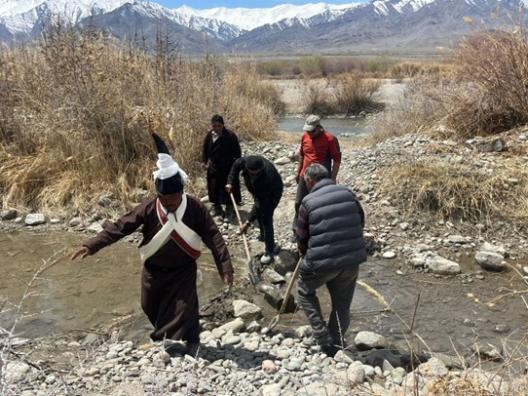
There is also a song about this place. When King Morup Stanzin was captured by Zorawar Singh, who was a military general of the Dogra Rajput ruler, Gulab Singh, and served as the Raja of Jammu under the Sikh Empire and taken to prison, one of his wives, Salam Khatoon from Skardu, sang:
Bea nang gang gang e byame nalang na
Dag gi sponbo la jabschung tsigyed nang le
Dag gi sponbo la jabschung tsigyed na
Nomo khemed mo jalabschan ldan shig ang le
This means:"When you, my beloved, walk barefoot over the hot sands of the Indus bank, since Zorawar's men won’t let you wear shoes, I pray that I become your shoes."
Another major tributary to the Indus river is the Zanskar River, Zangs-kar) meaning "white copper" or brassis which flows entirely within Ladakh, India. It is also one of those few remaining free flowing rivers in Indus. It originates northeast of the Great Himalayan range and drains both the Himalayas and the Zanskar Range within the region of Zanskar. It flows northeast to join the Indus River near Nimo.
Loss of glaciers, pollution and destruction of river ecology
“Indus water has reduced, the river is polluted, no one is interested to be along the river. You ask for stories on Indus… who has the time for stories these days, everyone is so busy with lives” says Mohammad Akbar Khan, a farmer from Thiksey village who lamented how Ladakh’s drastic changes due to extractive development, large scale tourism, false ‘green energy’ solutions, and climate change are alienating local people from their landscapes, waterscapes and mountains.
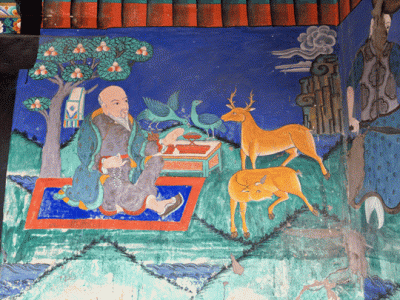
Over the last decade or so, Ladakh has been facing rapid climatic changes, with villagers reporting-massive changes in the weather patterns resulting in adverse impacts on pasturelands and water availability. The glaciers have been receding, water springs are drying up, the marshes are not dense and the heat during summers is exceptionally high. The groundwater which is a significant source of water for rivers and for agriculture has reduced due to faster glacier melting and changes in water use. “There were many glaciers here but now they are disappearing fast. Dariya has much less water and many birds, fishes have disappeared too. If there is no water in streams then how will they feed the dariya,” said Gyen Thupstan of Saboo village. He further added that “nobody follows customary rules anymore. The greed for money has increased so much that people don't care about the rivers, glaciers, streams, and animals. Also, lots of people who have come from outside don’t care about our springs which are sacred. They often wash clothes, throw garbage and pollute the sources.”
A recent study published in the Journal of Water and Climate Change in April 2024, shows that “glaciers have shrunk by 40% in area and 25% in volume since around 1650 AD, reducing the glacier melt that replenishes groundwater”. A 2015 study by ICIMOD concludes that “the highest quantity of ice will be lost from the Indus because of its large glaciated area. Warmer temperatures will also cause more precipitation to fall as rain than snow, resulting in melting ice not being replenished”. This in turn is impacting the ecology around the Indus river.
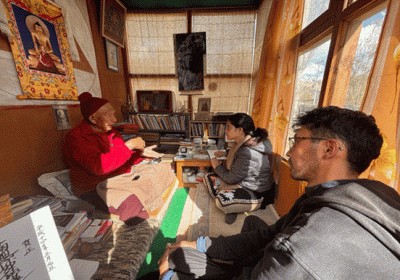
“Pastoralism has significantly reduced because of which the water retention capacity of pastures has reduced and it is impacting underground water availability. People don't keep animals and are using chemical fertilizers that have significantly polluted the river along with general garbage dumping”
Haji Mohammad Sadaq, farmer from Chushot Shama village
Amongst the many challenges the river faces includes plastic pollution, sewage discharge, construction along the river banks, encroachments and privatization of river catchment area, proposals for constructing eight new dams on the river. These are significantly impacting rivers health and its flow. Last month, in August, Spituk village, about 7 kms from Leh town, raised serious concerns over untreated sewage being discharged from the Angling sewage treatment plant to the Indus river. This was a result of heavy rainfall that Leh recorded in the last 52 years, with an unprecedented 80.2 mm which resulted in excess water in several streams. “The local administration has been conducting clean up drives for the Indus river but here the river is getting sewage water directly thrown. What kind of clean up drive this is” said Kunzang Dolma of Spituk village whose own house and agricultural fields are inundated with sewage water. The region is unprepared to deal with drastic impacts of climate change and excessive pollution that has exacerbated over the last few years.
Indus must have the right to flow and live
“Indus dariya has its own rights; we can’t move it the way we want. Indus needs to be protected from pollution, encroachments and peoples’ apathy. ”
Tsering Angchuk of Thiksey village.
“Dariya must have the right to flow. The river is medicinal because it crosses so many paths, moving rapidly through rocks and carries so many sediments of sacred lakes, glaciers, and lands. [The]River’s water was like a ‘prasad’ of the glaciers but now that has changed. The water is so polluted, we are scared of drinking its water…there used to be so many fishes in the river which we can't see anymore.”
Tsering Smanla of Shey village.
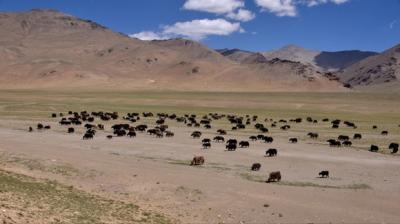
In the last few months, Indus has been in the news across the world for not so great reasons. After the April 25th terror attack in Pahalgam in Kashmir, India announced it was walking out of the Indus Waters Treaty (IWT), a six-decade-old transboundary water agreement between India and Pakistan that governs the division/sharing of water from the six rivers that constitute the Indus River Basin. Blocking river flows threatens agriculture, food security, and the livelihoods of millions along with impacting the aquatic flora and fauna of the river. Much has been written analyzing whether India can technically (legally) suspend the treaty without both party agreements as well as humanitarian crises that would arise from blocking and diversion of Indus waters. However, some of us wish to also question this human hubris and ego itself. Do humans have the power to use nature for vengeance? What right do we have to pollute, divert, dam, exploit an ancient, sacred river?
Being along the Indus, over the last few years, listening to his ripples, stories and songs that hold river’s wisdom, seeing his changing colors across seasons, learning about his ancient routes, we kept wondering what Indus would say being weaponized for vengeance? For hundreds of years, people in Ladakh have lived in relation to the Indus River. River’s songs have been sung over many years, echoing in the mountains, across the valleys, through the galaxies and carried across generations. Constructing, narrating songs and stories about the river and with the river, because the river is alive. However, that relationship is rapidly changing. The existential challenge for all of us now is how we can nurture ethics of care and bring discourse that can alter the way we see the rest of nature. How can we listen to the rivers again? How can we become the voice for Indus and other rivers that are being polluted, dammed, divided and diverted? How can we articulate our inter-beingness and wellbeing where we respect the rest of nature not so much because we have given it legal rights, but rather because it is simply the right thing to do.
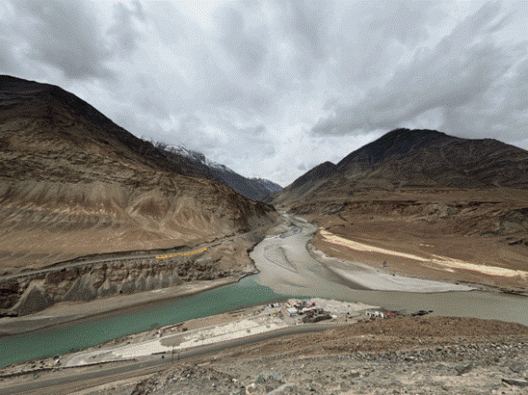
Reference:
Kothari, A, Bajpai, S, and Padmanabhan, S. (2019). Ladakh Autonomous Hill Development Council-Leh (India), How democratic, how autonomous? Kalpavriksh, Pune.
Padmanabhan, S and Kundaji, Y. (2014). Ri Gyancha: A biodiversity resource kit for educators in Ladakh. Kalpavriksh, Pune and Snow Leopard Conservancy – India Trust, Leh.

